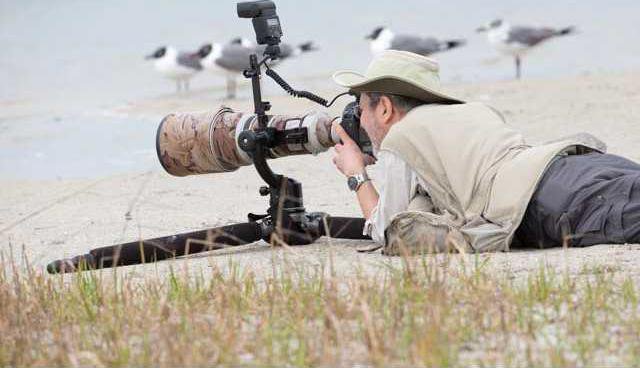Those of us that delve into wildlife and sports photography always get questions about our gear. There are so many options at so many levels (do you doubt that Hubble didn’t get the best eclipse images on earth-or close to it?)that it even becomes confusing to those of us that know a little bit. Circumstances and finances make some very difficult questions very easy to answer, however.
If you win the lottery or have a extra $25,000 lying around you can go with a medium format camera that will produce magnificent detail. and is like trying to carry a car. For much less, you can get a DSLR that is manageable in most situations and is much easier to carry.
If you look at David and Karole, you will see a 500 mm lens on a big camera with a tripod and flash. That is standard fare for bird and wildlife photography.
No, it doesn’t require that much firepower to get a good image. If you are going to blow up a picture for walls or posters, more pixels and the ability to shoot in the RAW format are almost necessary. It is a matter of playing the odds with point and shoot cameras vs. the big rigs – you will get more usable images with less effort when you are geared up, and if you are going to submit to magazines or enter contests the larger cameras are usually necessary.
Adequate photography has undergone huge changes since the cell phone provides a concealed carry option for everyone. A lot of my morning walk images are taken with a cell phone. The lens in those machines is variable enough to get great close up shots with a lovely, clear background and foreground.
Selfies are difficult ( have to set up with a timer, etc...) with big cameras. The quality of cell phones is huge. They get better all the time, and I recommend them for 90 percent of average daily photography.
If you dream of stopping a bird in the air, a frog in mid-leap, a bone-jarring hit at mid-field or a golfer in mid-swing – you won’t be happy with a slow camera.
The current state of the art involves lighter cameras that don’t have mirrors. We are all looking for less to carry and keep the same quality. It may be possible. My camera has a life expectancy of about 400,000 clicks of the shutter. I am at 44,000.
I suspect it will be obsolete or I will die before it quits working. I hope they don’t come out with a unit that weighs nothing, has perfect autofocus and is reasonably priced – it will put a tear in a lot of eyes ... Ha!
Everyone should take all the pictures they can and share them feverishly with all your friends-- you never know when the random cruelty of the universe (thanks, Wayne!) will make that impossible. Start shooting!
Doctor Dan Witt is a retired physician and nature enthusiast.




